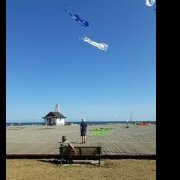How To Improve The Thai Railway-System ?
-
Recently Browsing 0 members
- No registered users viewing this page.
-
Topics
-
-
Popular Contributors
-
-
Latest posts...
-
-
0
Another brilliant idea from the Trump administration
Trump insists that companies in the US now use real cane sugar in their products instead of fructose. While at the same time slapping up to 50% tariffs on the countries that the US imports cane sugar from. The world's biggest sugarcane producers are Brazil and India, followed by China, Thailand https://finance.yahoo.com/news/cokes-shift-cane-sugar-expensive-191618706.html The Corn Refiners Association said the complete elimination of high fructose corn syrup from the U.S. food and beverage supply would cut corn prices by up to 34 cents a bushel, resulting in a loss of $5.1 billion in farm revenue. Trump's ongoing trade wars, however, would make it difficult to cover the deficit, sugar analyst Michael McDougall said. "It will most likely come from Brazil," he said, referring to the world's top cane sugar producer, "but Trump just hit Brazil with a 50% import tariff." Coke's shift to cane sugar would be expensive, hurt US farmers -
789
Israel Hamas War the Widening Middle East Conflict
Pope Leo XIV has renewed his call for a Gaza ceasefire after three people sheltering in the Catholic church in Gaza City were killed in an Israeli strike. A telegram said the Pope was "deeply saddened to learn of the loss of life and injury caused by the military attack" on the Holy Family Church. The Latin Patriarchate of Jerusalem, which oversees the church, said it was "struck by the Israeli army". Nine other people were wounded, one of whom is in a critical condition in hospital. The parish priest was lightly injured. https://www.bbc.co.uk/news/articles/c8xvnlpx2dxo -
194
-
1
Trump's Uncle, Bombers, and Big Headed Baloney: MAGA's Gone Full Cartoon
So I’m sat there with me feet up, munchin’ on some spicy pork skins from 7-Eleven, doom scrollin’ through me phone, when I nearly choke on a chili flake. Donald Trump, yeah, the guy with the vein problems in his legs, was at a tech summit in Pennsylvania, wafflin’ on about how his uncle, some geezer named Dr. John Trump, taught the bloody Unabomber at MIT. You what, mate? Did I fall asleep and wake up in a Looney Tunes sketch? First off, couple facts for the slow kids in the room. Uncle Johnny carked it in 1985, yeah? Kaczynski, the Unabomber nutter, was off the rails in the late seventies and only got nabbed in 1996. So unless the bloke was teachin’ from the afterlife, I’m callin’ full blown bullsh*t on this one. Second, Ted Kaczynski never set foot in MIT. Did Harvard, did Michigan, taught in California, but MIT? Nah. Not a chance, mate. Closest he got to MIT was probably readin’ the name on a packet of biscuits. And then, just for a laugh, Trump goes on to say his uncle was the longest servin’ professor at MIT. Turns out, that’s bloody cobblers too. He was there a while, fair play, but not some immortal Yoda of science, not by a mile. Now, don’t get me wrong lads, I ain’t got a dog in Yankee politics, but Christ almighty mate, what is it with these politicians and makin’ up absolute fairy tales about their families? One minute it’s “my uncle discovered electricity,” next it’ll be “my great gran taught Bruce Lee kung fu in her garden shed.” Honestly, you couldn’t script this nonsense. Makes me wonder if the poor sod even believes half the guff comin’ out his own gob, or if he’s just freewheelin’ through life like one of them Pattaya blokes who reckons he was a spy for MI6 but can’t even spell embassy. Anyway, that’s your global leadership update for the day. Blokes runnin’ countries out here talkin’ bigger porkies than a Soi Cowboy bar girl tryin' to get you to bar-fine her. No wonder we all buggered off to Thailand. Life’s simpler when the biggest lie you hear is, “I love you long time.”- 1
-

-
3
THAILAND LIVE Thailand Live Friday 18 July 2025
Bangkok Police Clamp Down on Tuk Tuks Blocking Roads Picture courtesy of KhaoSod In a concerted effort to curb traffic chaos in Bangkok, more than 800 tuk tuk drivers have been apprehended this month for blocking roads outside the city's bustling malls. Full story: https://aseannow.com/topic/1367017-bangkok-police-clamp-down-on-tuk-tuks-blocking-roads/
-
-
Popular in The Pub




.thumb.jpg.3ee24d9400fb02605ea21bc13b1bf901.jpg)


.thumb.jpeg.d2d19a66404642fd9ff62d6262fd153e.jpeg)






Recommended Posts
Create an account or sign in to comment
You need to be a member in order to leave a comment
Create an account
Sign up for a new account in our community. It's easy!
Register a new accountSign in
Already have an account? Sign in here.
Sign In Now